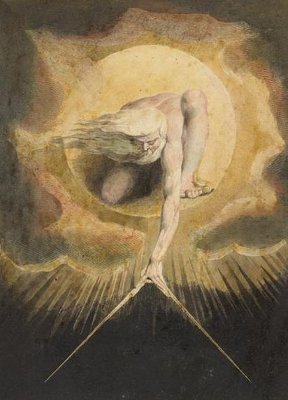Creation Corner
Toward a Restoration of the Creation Narrative

Calamitous consequences of universal significance have resulted from mistaken opinions about the creation narrative in the Book of Genesis. Indeed, the survival of America, the guardian of freedom, depends on whether we can assimilate that narrative to contemporary scientific knowledge of the universe.
Two versions of the creation narrative, same event, different perspectives
Our first obvious task is to clarify the misunderstood creation narrative in its own terms. For this purpose, let us consult Eliezer Zeiger, a professor of plant biology at the University of California at Los Angeles. In “A Unified View of Torah and Evolution,”[i] Zeiger reminds us that Genesis provides not one but two accounts of creation:
(1) Genesis 1:27: Elokim created (bara) the man.
(2) Genesis 2:7: HaShem Elokim formed (yetsar) the man.
Genesis 1:27 uses the verb (bara) created ex nihilo, something from nothing.
Geneses 2:7 uses the verb (yetzar) formed man from dust.
The second narrative is not about creating but of forming, as is evident from the text Va’yitser Ha’Shem Elokim et ha’adam afar min ha’adamah (God formed man from the dust). The formation narrative thus hints at transformation and change, the inner meaning of the biological concept of evolution. The two narratives of Genesis therefore teach us that at the beginning the universe was created ex nihilo, followed by a formation or evolutionary process.
In the beginning of time
What is more, many Jewish philosophers teach us that the first verse of Genesis (“In the beginning of”) refers to the beginning of time. Commenting on Genesis 1:1, Torah scholar and Kabbalist Nachmanides (1194-1270) writes:
The Holy One, blessed be He, created all things from absolute non-existence. Now we have no expression in the sacred language for bringing [into existence] something from nothing other than the word bara (created). Everything that exists under the sun or above was not made from non-existence at the outset. Instead He brought forth from total and absolute nothing a very thin substance devoid of corporeality but having a power of potency, fit to assume form and to proceed from potentiality into reality. This was the primary matter created by God.[ii]
This “primary matter” is nothing but energy, which can be converted into matter (and vice versa) via Einstein’s famous formula E=mc2. Commenting further on Genesis 1:1, Nachmanides says: “with this creation, which was like a very small point having no substance, everything in the heavens and on the earth was created.” Physicists call this point (which was infinitely hot and of almost infinite density) a “singularity,” from which cosmologists say the Big Bang originated![iii]
Now, since the first word of the Bible, beresheet—“In the beginning of”—means in the beginning of time, Biblical time begins with the appearance of matter—an extraordinary insight, one that awaited the elucidation of Einstein’s General Theory of Relativity.[iv]
An atheist comes to realize…
Collateral support for Big Bang cosmology, and most significant for the creation narrative, is provided by Nobel prize-winning physicist Steven Weinberg—a reputed atheist. According to Weinberg, the strongest support for the Big Bang comes from measuring the cosmic background radiation left over from the hot early stages of the universe. This radiation, discovered in 1964, was actually measured by the Cosmic Background Explorer (COBE) satellite beginning in 1989.[v]
The measurements recorded in 1992 were awesome. In mapping the sky, COBE detected non-uniformities in the temperature of radiation that had separated from the dense matter of the universe about a million years after the Big Bang. It is believed that these non-uniformities or ripples were the effects of the gravitational field produced by clumps of matter when the universe was first becoming transparent to radiation. COBE thus revealed what astrophysicists had been seeking: the mechanism for the formation of star clusters and the galaxies!
…that the universe had a beginning
Astronomer George Smoot, the project leader for the COBE satellite, declared at a press conference held on 23 April 1992, “What we have found is evidence for the birth of the universe … It’s like looking at God.”[vi] “Smoot’s dramatic pronouncement,” says Michael D. Lemonick, “was on every news broadcast that night, and on the front page of every major U.S. newspaper the next morning.”[vii]
Early reports about the COBE findings prompted one of the foremost international journals of physics to publish an article bearing the title, “Creation of the Universe from Nothing”! Moreover, at the 1990 meeting of the American Astronomical Society, Professor John Mather of Columbia University, an astrophysicist who served on the staff of NASA’s Goddard Center, presented “the most dramatic support ever” for an open universe [i.e., one that supports a cosmological proof of God’s existence]. According to a journalist present, Mather’s keynote address was greeted with thunderous applause, which led the meeting’s chairman, Dr. Geoffrey Burbidge [an atheist astronomer], to comment: “It seems clear that the audience is in favor of the book of Genesis, at least the first verse, which seems to have been confirmed.”
Endnotes
[i] Eliezer Zeiger, “A Unified View of Torah and Evolution,” B’Or Ha’Torah, No. 17 (Jerusalem, 2007), 20-21.
[ii] Ramban (Nachmanides), Commentary on the Torah (5 vols.; New York: Shilo, 1976), I, 23, Chavel trans.
[iii] See Stephen W. Hawking, The Theory of Everything: The Origin And Fate of the Universe (Beverly Hills: New Millennium Press, 2002), 98.
[iv] I am alluding to time dilation, of which more in a moment.
[v] See Michael D. Lemonick, Echo of the Big Bang (Princeton: Princeton University Press, 2003), 12, 13.
[vi] Cited in Ross, 31. Lemonick, 64. See Weinberg, The First Three Minutes: A Modern View of the Origin of the Universe (updated) (New York: Basic Books, 1988), 180-182; Weinberg, Dreams of a Final Theory (New York: Vintage, 1994), 267-269; Stephen Hawking, The Theory of Everything: The Origin and Fate of the Universe (Beverly Hills, New Millennium, 2002), 98-101; Hawking, The Universe in A Nutshell (New York: Bantam, 2001), 94-95. In March 2004, the Space Telescope Institute announced that the orbiting Hubble space telescope collected light from the youngest stars, i.e., from a point just a few hundred million years from the beginning of the universe.
[vii] Lemonick, 64.
-

 Civilization3 days ago
Civilization3 days agoDC Pipe Bomb Arrest Raises Questions About Christopher’s Wray’s FBI
-

 Civilization4 days ago
Civilization4 days agoThe Legal Logic Behind U.S. Operations Against Narco-Terrorist Networks
-

 Executive4 days ago
Executive4 days agoNewsom’s ‘National Model’ for Homeless Wracked by Fraud
-

 Executive3 days ago
Executive3 days agoWhen You’re in a Hole, Stop Digging
-

 Education3 days ago
Education3 days agoWaste of the Day: Taxpayers Subsidize Football Coach Severance
-

 Executive2 days ago
Executive2 days agoWaste of the Day: Obamacare Failed Test, Approved Fraudulent Subsidies
-

 Civilization2 days ago
Civilization2 days agoPence Calls on Trump To Fire RFK Jr Over Abortion Drug
-

 Executive4 days ago
Executive4 days agoWaste of the Day: Feds Pay Nonprofits That Sue the Government













